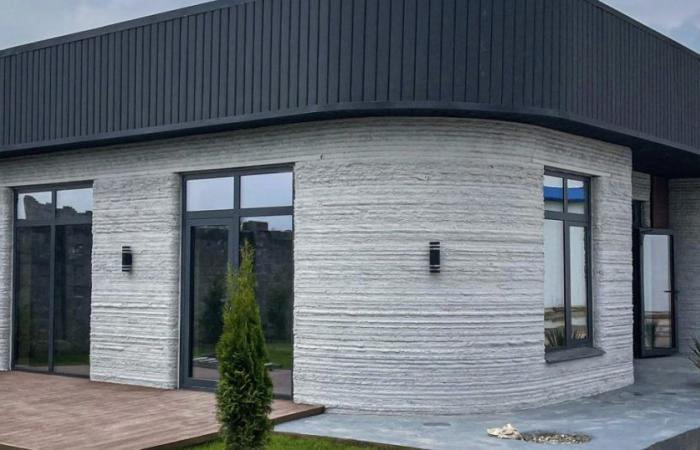A new milestone in modern architecture has been reached in Almaty, Kazakhstan: the first 3D printed house in Central Asia. Designed by BM Partners using Cobod’s advanced 3D printing technology, this home not only defies the region’s extreme climate events, but also strict seismic regulations, proving that this type of printed housing can be both durable and affordable.
“The adoption of modern technologies is essential in today’s world. Our company is committed to remaining at the forefront of technological advancements with 3D construction printing in our country. With this project, our company has taken a step forward into the future, responding to Kazakhstan’s urgent need for modernized, efficient and resilient earthquake-proof housing solutions,” said Marat Oshakhtiev, CEO of BM Partners, sharing the vision guiding the project.
A revolutionary process
The magic begins with the Cobod Bod2a 3D printer specialized in construction. Using a specially formulated cement mix, the device prints the walls layer by layer. This material, stronger than conventional concrete, is designed to withstand extreme weather conditions and earthquakes.
“The building was built to withstand a force 7 earthquake, reflecting strict adherence to engineering principles and building codes intended to ensure safety and structural integrity during major seismic events,” Cobod explains. With a compressive strength of nearly 60 MPa (8,500 PSI), it far exceeds the 7-10 MPa typical of brick and stone used in Kazakhstan.
Il Kazakhistan represents a formidable climate challenge, with temperatures ranging from -57 to 49 degrees Celsius. To address this challenge, the walls of the house are insulated with expanded polystyrene concrete, which improves both thermal and acoustic performance. This combination of technological innovation and local materials highlights the adaptability of 3D printed constructions to different regional conditions.
In tempo record
Once the walls are printed, a human team takes care of the final details: installing doors, windows and furniture. The whole processfrom installing the printer to finishing the house, dura about two months. The result is one internal space of 100 square meterswith a simple and functional design, large windows and a large living room that showcases the extensive capabilities of 3D construction.
The most surprising thing about this innovative house is its cost. Priced at around $21,800, this home is significantly cheaper than the average local home. This economic factor, combined with the speed of construction and robustness of the structure, positions 3D printing as a viable and promising solution for the future of housing.
“This project proves once again that 3D printed buildings are built to last, even in high seismic risk areas. We are proud to have developed the solution that allowed BM Partners to complete this project in just two months, using extra-strong 3D printable concrete made from locally sourced materials,” concluded Henrik Lund-Nielsen, founder and CEO of Cobod International.






